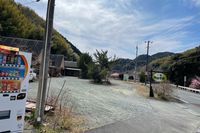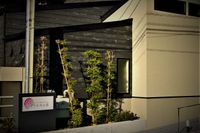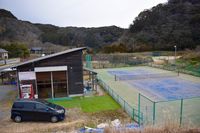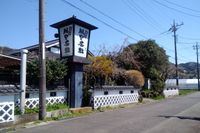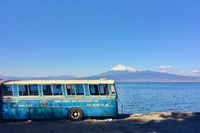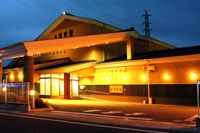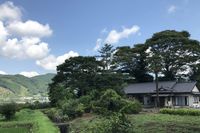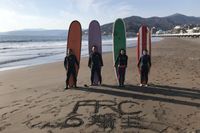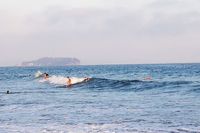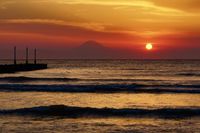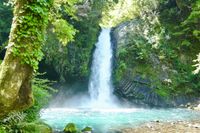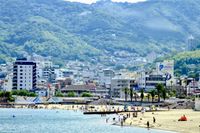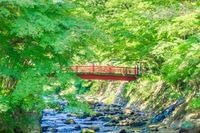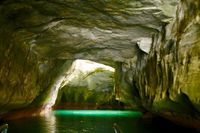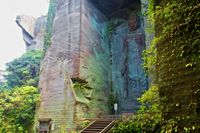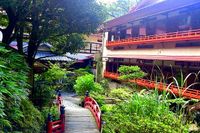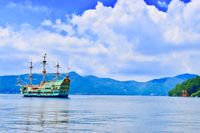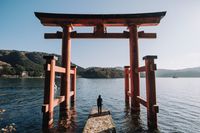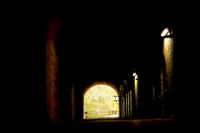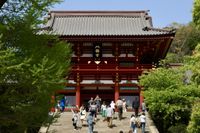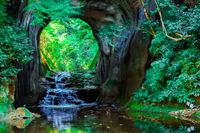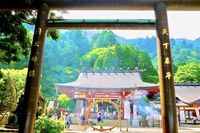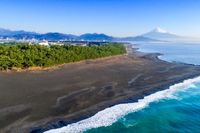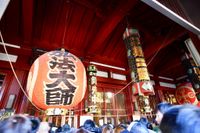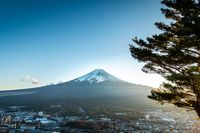Ura-Sabaku
東京都/大島町

Description
This is a desert-esque area on the hidden island of Izu Oshima. The landscape was created by an eruption of Miharayama mountain, known as the "god fire". From the magma, this eliminated the existing landscape as well as plant life, and created a bleak black landscape. The area draws in many visitors for its view that looks almost like being on Mars.
Homepage
Address
Nearby Car Night Spots
Izunokuni City Nirayama "Dining Daikan Yashiki"
¥4,000〜
/ per nightSHizuoka Nirayamayamaki, Izunokuni City
4.8
(8)Mochimune Fishing Point RV Park - Calstreet
¥1,500〜
/ per nightShizuoka Mochimune, Suruga-ku Shizuoka-shi,
4.7
(3)Nearby Activities
FRC Surf School (Beginners Welcome!)
¥5,400〜
/ per personKanagawa Ken Kugenuma Kaigan, Fujisawa Shi
3.0
(0)Organic Vegetable Picking at Microbe-NaturalFarmers
¥2,500〜
/ per personKanagawa Ken Fukuda, Yamato Shi
3.0
(0)Ranking Stations
Vanlife BASE | 45 min. from Narita Airport / Perfect for campervan travel/A seaside town rich in nature/Japanese countryside town/welcome traveler
¥7,000〜
/ per nightChiba Koseki, Kujukuri-machi, Sambu-gun
5.0
(63)Shin Meishin Suzuka PA (inbound) RV Station Suzuka * With Power!
¥2,200〜
/ per nightMie Yamamotocho, Suzuka-shi
4.3
(157)(Bonfire BBQ) Chita Mihama Noma Beach Station
¥3,500〜
/ per nightAichi Noma, Mihamacho, Chita County
4.7
(42)Nearby Drive Spots
Okinoshima Beach
This is a beach area with a coastal area on both sides, with clam waves. It is situated along the sand strip between the mainland and Okinoshima, near Tateyama City. Visitors can enjoy snorkeling and diving, and viewing the corals that inhabit the area. The area is particularly beautiful at night.
Joren Falls
This is a waterfall that flows at the foot of Mount Amagi. The name came from Jyoren-ji Temple which used to be nearby. The waterfall is 25 meters high and 7 meters wide. At the side of the waterfall, there is a monument of Ishikawa Sayuri's hit song "Amagi goe" based on this area.
Atami Onsen
This is an old onsen in Atami. 1,500 years ago, during the reign of Emperor Ninken, Atami was given its name due to hot water that sprung from the beach water, as the Japanese characters for "Atami" literally mean "hot sea water". The area was admired by Tokugawa Ieyasu during the Edo era(1603-1868), and during the Showa era(1926-1989), became particularly famous as an onsen resort town, and is still famous as a beach and onsen town today.
Shuzenji Onsen
This is an old onsen in Izu. Its history is linked with Shuzenji Temple, and was opened 1,200 years ago by the Kukai who is the monk founded Shingon buddhism. During the Meiji Era(1868-1912) it was loved by writers such as Natsume Soseki, Akutagawa Ryunosuke, Shimazaki Toson, Kawabata Yasunari amongst others. There is an onsen town along the river, and is particularly popular for its bamboo forest.
Dogashima Tensodo Cave
This is a famous viewing spot, known as the Matsushima of Izu. As part of the roof of the cave has collapsed, light pours in certain areas, creating an other worldly sight. Pleasure boat cruises that travel from the coast to inside the cave are particularly popular.
Mount Nokogiri Nihon-ji Temple
This is a temple of the Soto sect which was founded in 725 AD by Gyoki. The Buddha is of the Yakushi Nyorai, with Ryoben, a Buddhist monk, making Daikokuten statues from wood, Kukai, the founder of Shingon sect, making them from Stone, and Ennin, a priest, making the Kongourikishi statues. It is famous for the great buddha statue at 31 meters high, built in 1783, as well as the 1553 stone buddha statues and the viewpoint at Boso peninsula known as "peeking into hell".
Hakone Onsen
This is an old spring Bath at the base of Hakone Volcano. It is a treasured area that has 20 hot spring baths, known as the Hakone Ni-ju-yu. The area has 1,300 years of history, and is famous due to Toyotomi Hideyoshi going to this area. During the Edo era(1603-1868), the area prospered as a hot spring spot in the Tokaido area, and was also revered by the house of the Tokugawa family.
Lake Ashinoko
This is a lake situated in Hakone. The Hakone Shrine can be found here as well as resort areas and other points of interest. Mount Fuji can also be viewed from here. Pleasure boats themed on pirate ships are also becoming popular in the area, as well as it being the end goal in the Hakone Ekiden annual marathon, and the start of the route back.
Hakone Shirne
This is a shrine built in 757 by Mangan. It is said to house the God named "Ninigi", as well as the Gods "Konohana-Sakuyahime" and "Hikoho Hodemi no Mikoto". Mangan is also worshipped as a protector God after having slayed the nine headed dragon that ravished Lake Ashinoko. One of the most striking sights is the "Heiwa no Torii(The Gate of Peace)", built in 1952, that appear to float in the Lake Ashinoko.
Sarushima Island
This is Tokyo's only uninhabited island, in Yokosuka. The area was used for defense during the war, and there is evidence of this that can be seen today. The place is named "Sarushima" (Monkey Island). While there are no monkeys inhabiting the island these days, it is said that a priest named Nichiren was saved by monkeys when traveling to this island during the Kamakura era(1185-1333), hence the name.
Tsurugaoka Hachimangu
This is a temple that was established in 1063 by Minamoto Yoshitsune. It houses the Yawata God known as Emperor Ojin HimegamiEmpress Jingu. The temple was central to the Kamakura Bakufu, which was started by Minamoto Yoritomo, and was known as guardian deity of Minamoto clan, a Kamakura Samurai. Under the reconstruction of the Hojo clan and Tokugawa families, the temple remains the heart of Kamakura and a place of respite and hope for many.
Kameiwa Cave
This is an unexplored stream area near Kimitsu City. The stream cave was created in the Edo era(1603-1868) to supply water to supply water to the paddy fields. The name comes from the fact that the rock formations look like turtles. When the sun rises in the morning, the light shines into the cave, making it a must see area in the early morning.
Oyama Afuri Shrine
This shrine was built in 200BC. It houses the Gods Oyamatsumino-okami (Mountain God)Takaokamino-kami (Water God)Oikazuchino-kami (Thunder God) . Historically the mountain was considered a place of worship, and was visited by all types, from warriors to common people. Minamoto Yoritomo offered a sword to defeat Taira clan, and it is said that from this the culture of "Osamedachi" (sword offering) was born, and its influence can even be seen in Japanese Rakugo comedy and Ukiyo-e art.
Miho no Matsubara
This is a scenic spot in Miho Peninsula, which is registered as a World Heritage Site along with Mt. Fuji. It is famous for the beautiful view of Mt. Fuji and Izu Peninsula, and has a total length of 7 km, with 36,699 pine trees and Suruga bay that comes in between. It has appeared in Manyoshu, the oldest Japanese poem in Japan, in Japanese ukiyo-e imagery and has fascinated many historians.
Kawasaki Daishi Heikenji Temple
This is a temple, which was built in 1128 by the Hirama Kanenori. The temple was a mainstay for the Shingon sect and founded by Kukai, a famous Japanese poet. During a historical pilgrimage known as the 88 places of Kanto, the temple was designated as a special sacred site, and the Tokugawa family visited here during the Edo period(1603-1868). Even now, a great many people visit this shrine for the "Hatsumoude" (new years temple visit)
Mount Fuji
Japan's tallest mountain at 3,776 meters and a registered World Heritage Site. Mount Fuji is a splendid sight and one of the most well known views of Japan. Mount Fuji has historically been known as an object of worship and holy site. The mountain is open to climbers between July and August.

